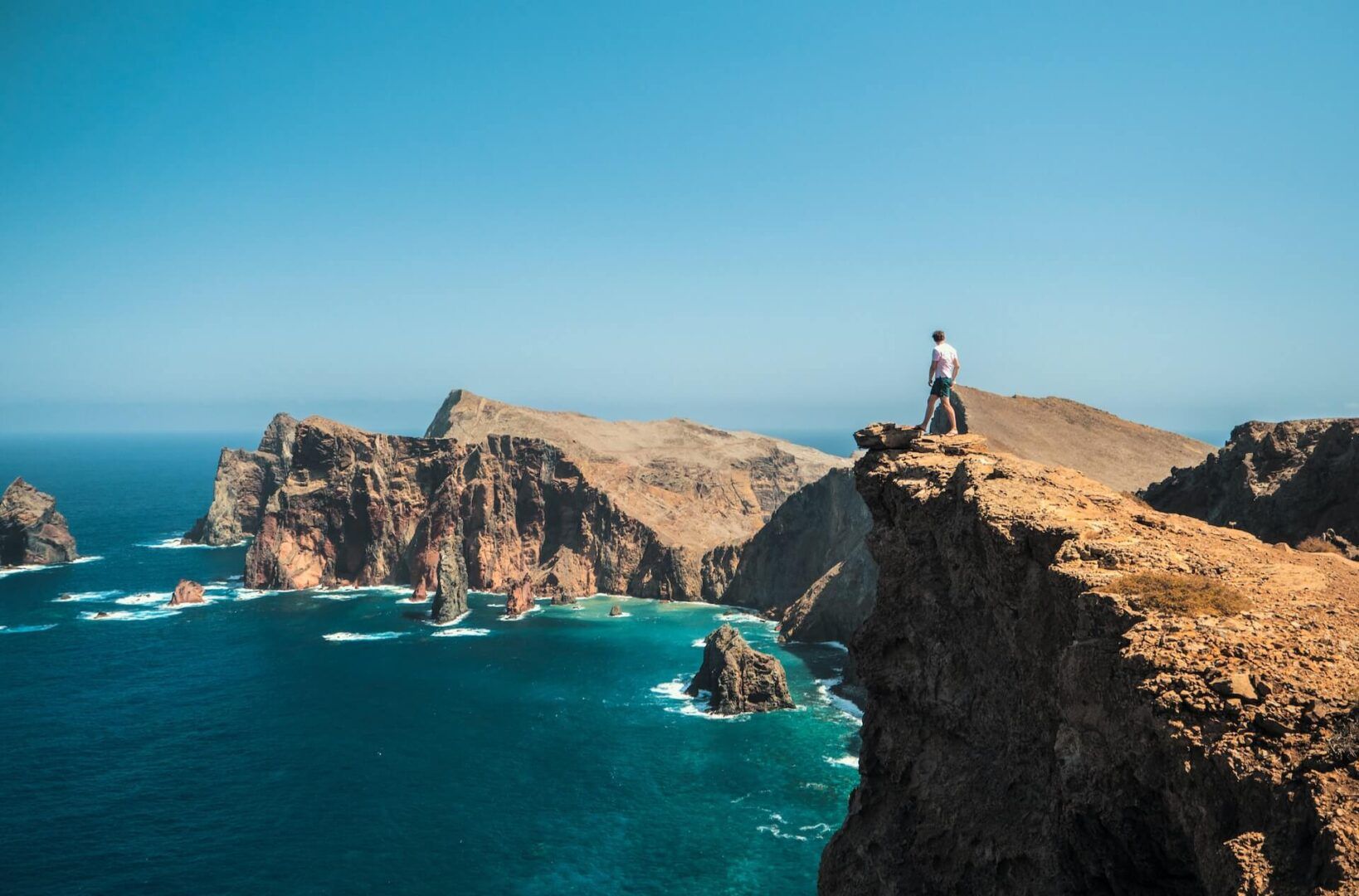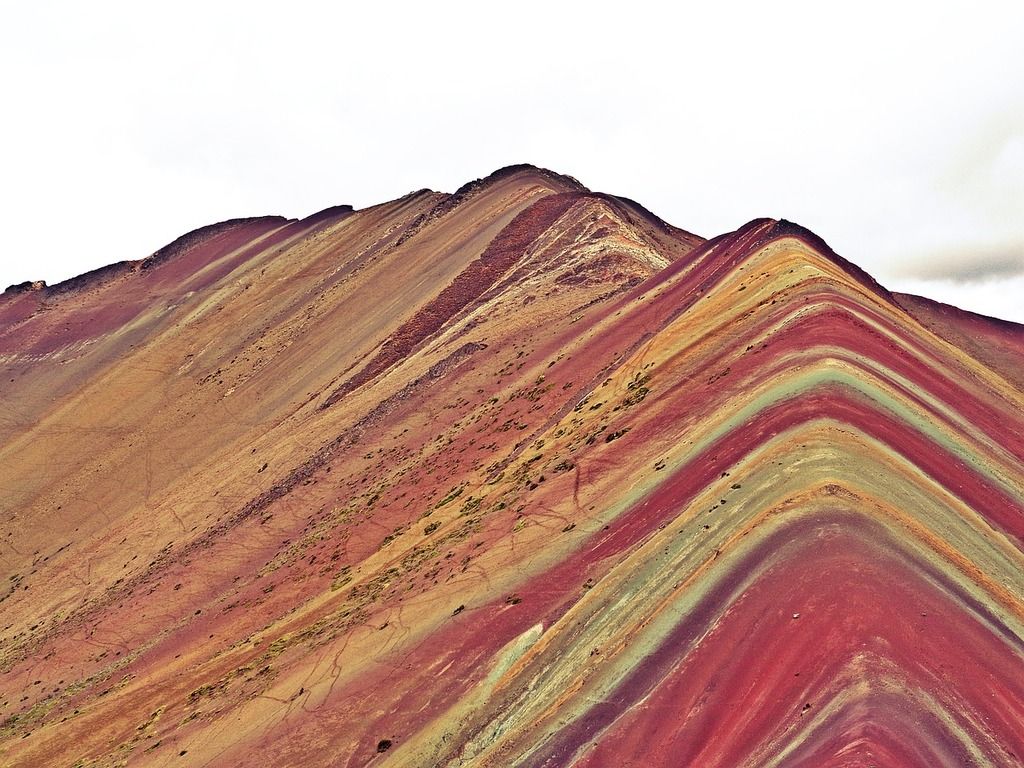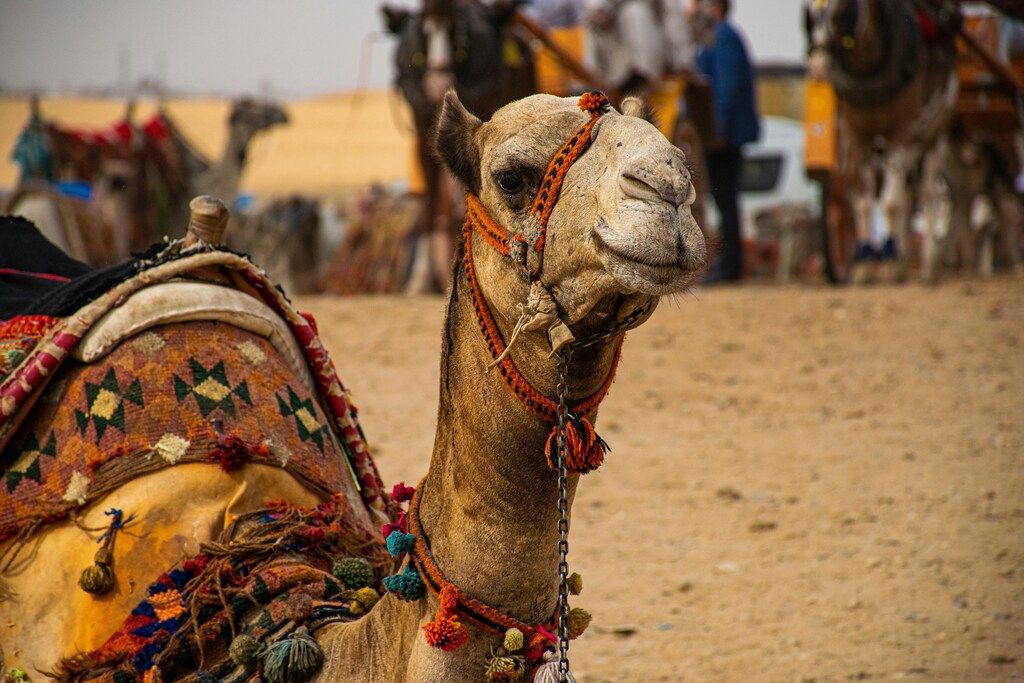

Egyptian deserts are an entirely different world from buzzing cityscapes and historic monuments. Outside of the pyramids and bazaars, the deserts in Egypt form great, golden stretches where time seems pleasantly suspended.
Taking up more than 90% of all the space in the country, the deserts of Egypt are still mostly unexplored by visitors who keep their exploration to the Nile Valley. Regardless, these incredible wildernesses offer thrills and adventures that stand up to any other place on earth.
It doesn’t matter if you’re driving your 4×4 across golden dunes or following historic caravan routes on a camel. Heck, you could even be standing in awe while the sunset turns the landscape into a painter’s dream. Whatever it is, Egypt’s deserts can offer an experience that feels transcendent.
That said, let’s dive into the magnificent deserts in Egypt awaiting the curious and the brave.
How many deserts are there in Egypt? A land shaped by time
When considering the number of deserts in Egypt, you might be inclined to think of a single endless stretch of sand. But that’s not entirely accurate and the reality is actually much more intriguing.
Egypt’s landscape primarily divides into two gigantic desert regions. First, there’s the Western Desert (also known as the Libyan desert). It covers about ⅔ of the Egyptian landmass. Then, there’s the Eastern Desert (or the Arabian Desert) that stretches to the Red Sea Coast from the Nile Valley.
Neither of these places are just run-of-the-mill sandboxes. They’re a mix of diverse landscapes with everything to offer from limestone plateaus and salt pans to dune fields and jagged mountains. Outside of them, there’s the Sinai Peninsula, giving its own unique flair to the desert.
Inside these broad zones, you’ll find multiple sub-deserts and regions, each with their own geological peculiarities.
Take the Western Desert, for instance—it’s a treasure trove. You’ve got the White Desert with its surreal chalk formations, the Black Desert dotted with volcanic hills, the Great Sand Sea flaunting dunes that scrape the sky, and lush oases that have cradled life for thousands of years. Meanwhile, the Eastern Desert counters with rugged mountain vistas and ancient trails once trodden by miners hauling gold and gems for pharaohs.
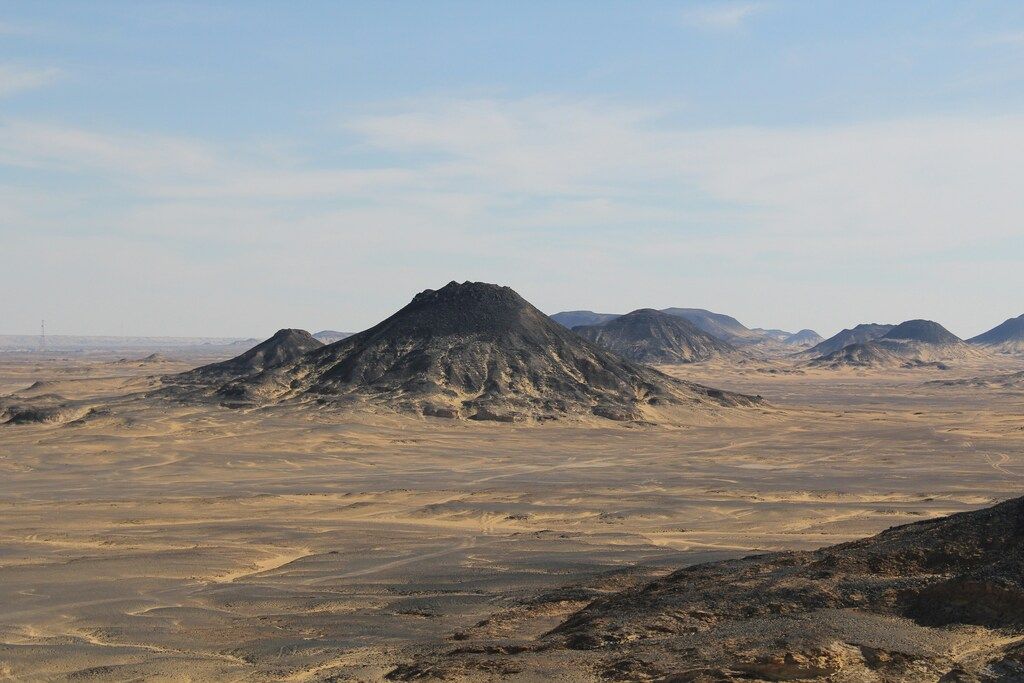
Shaped by Time: Egypt’s Desert Story
What truly sets Egypt’s deserts apart is their ancient craftsmanship—sculpted over millions of years by nature’s relentless tools. Wind has whittled bizarre rock shapes; rare rains have etched wadis (those dry riverbeds that burst into bloom after storms); and the sun’s unyielding glare has forged a harsh realm where only the toughest survive. Historically, these deserts have doubled as both shields and pathways, shaping Egypt into one of humanity’s earliest civilizations while safeguarding relics beneath their sands.
Geologically, it’s a saga worth telling. The Western Desert, part of the sprawling Sahara, once lay submerged under a prehistoric sea, leaving behind limestone and chalk that now define its oddball landscapes. The Eastern Desert, by contrast, owes its rugged peaks to tectonic clashes between the African and Arabian plates. This variety isn’t just eye candy—it’s a living textbook of Earth’s deep past, unfolding across every dune and crag.
The Western Desert: Egypt’s vast and diverse wilderness
Spanning from the Nile Valley to the Libyan border and dipping south toward Sudan, the Western Desert sprawls across nearly 700,000 square kilometers—about twice the size of the United Kingdom. This giant chunk of Egypt’s slice of the Sahara swallows two-thirds of the country’s landmass. Far from a dull, sandy void, this desert in Egypt unfurls a stunning array of landscapes and wonders.
Picture vast limestone plateaus punctuated by depressions, some cradling fertile oases fed by hidden aquifers. Places like Siwa, Bahariya, Farafra, Dakhla, and Kharga have long anchored desert trade routes, sustaining quirky communities with traditions all their own. Between these green havens, the desert rolls out a gallery of geological stunners: the White Desert’s chalky sculptures, the Black Desert’s dark volcanic mounds, and the Great Sand Sea’s towering, windswept dunes—some soaring past 100 meters.
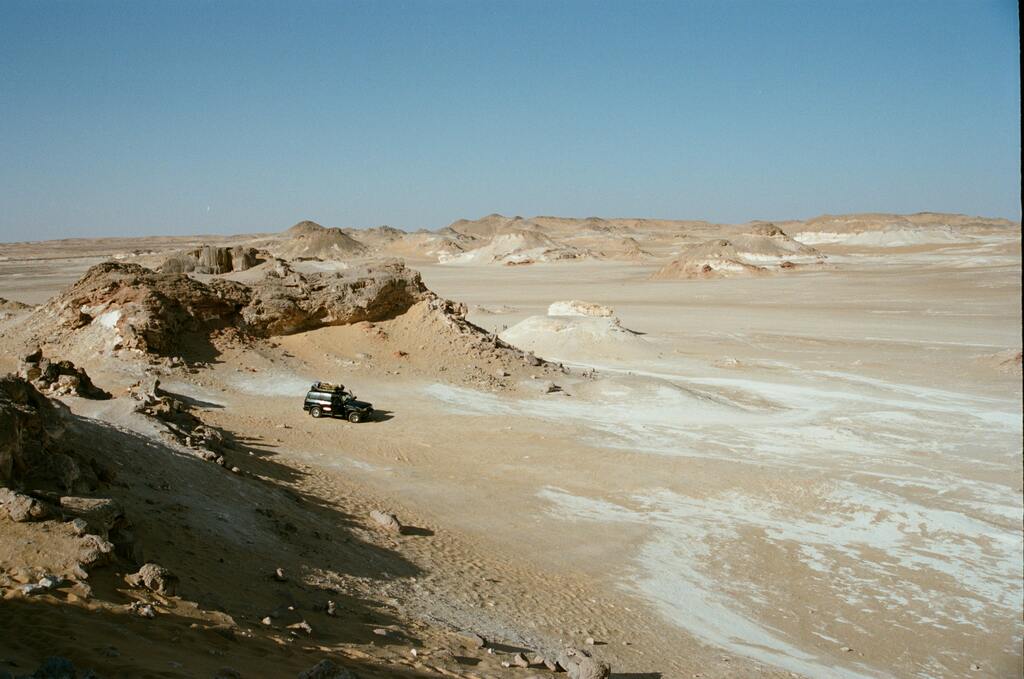
Adventure in the desert
Adventure calls loud here. Multi-day jeep safaris plunge into remote corners where human footprints grow scarce. Wildlife buffs might spot fennec foxes darting through shadows, gazelles bounding across plains, or reptiles basking on sun-warmed rocks. Birdwatchers, too, find joy near the oases, where migrating flocks pause.
Discover the desert’s history
History buffs won’t be disappointed either. The Western Desert brims with echoes of the past—prehistoric rock art scratched into cliffs, Roman fortresses crumbling into dust, and caravan stops whispering tales of trade. The Temple of the Oracle in Siwa, famously visited by Alexander the Great, ties travelers to millennia of human stories.
But it’s not all smooth sailing. The climate swings wildly—summers bake above 40°C, while winter nights flirt with freezing. Yet, these extremes amplify the magic. Watching the sun rise over dunes or camping under a sky bursting with stars, untainted by city lights, ranks among Egypt’s most soul-stirring moments. One traveller once put it perfectly: “It’s a place where you can hear your own heartbeat.” That silence, that scale—it sticks with you.
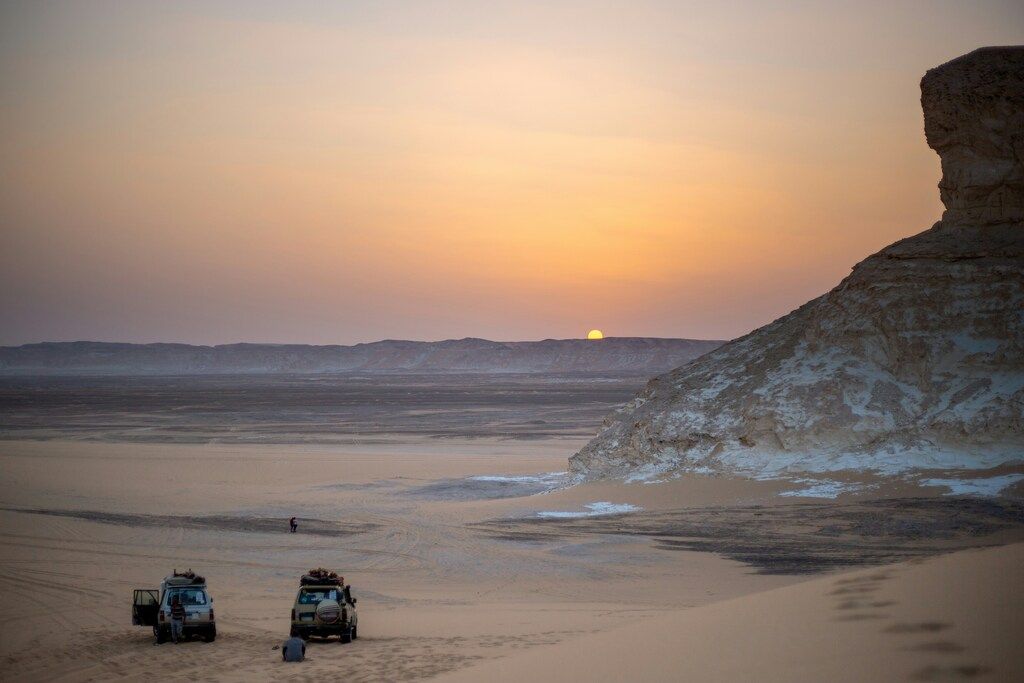
The White Desert: surreal landscapes of chalk rock formations
Hands down, the White Desert in Egypt—known locally as Sahara el Beyda—might just be the country’s most photogenic gem. Tucked about 500 kilometers southwest of Cairo near Farafra Oasis, this 300-square-kilometer protected patch feels like a sci-fi set. Towering chalk formations, bleached a blinding white, rise from golden sands in shapes that defy logic.
These aren’t man-made marvels. Nature’s been the artist here, working patiently over eons. Millions of years back, this spot sat under a sea. As the waters retreated, they left a chalky plateau behind. Then came the winds—fierce, unrelenting—carving the rock into mushrooms, chickens, camels, and other whimsical forms that shift with the day’s light and shadows.
Timing matters. Catch the White Desert at sunrise or sunset, and those formations glow pink, orange, gold—then fade back to ghostly white. Under a full moon, the scene turns downright eerie, silver light casting an otherworldly sheen. It’s like stepping onto a different planet.
Camping here often tops travelers’ highlight reels. Far from city glare, the night sky explodes—stars, planets, the Milky Way’s misty arc—all vivid above. Local guides stoke campfires, dishing up Bedouin meals that weave into the night’s charm.
Most folks explore via safaris from Bahariya Oasis, often pairing the White Desert with stops at the Black Desert or Crystal Mountain, where quartz glints in the sun. Photographers go wild, chasing endless angles, but a heads-up: those chalk shapes look sturdy but bruise easily. Since becoming a national protectorate in 2002, the focus stays on keeping this fragile wonder intact.
Planning a trip? Aim for October to April—milder days, less brutal heat. Pack warm layers for nippy nights and a camera—you’ll curse yourself if you don’t. This isn’t just a place; it’s a memory forged in chalk and starlight.
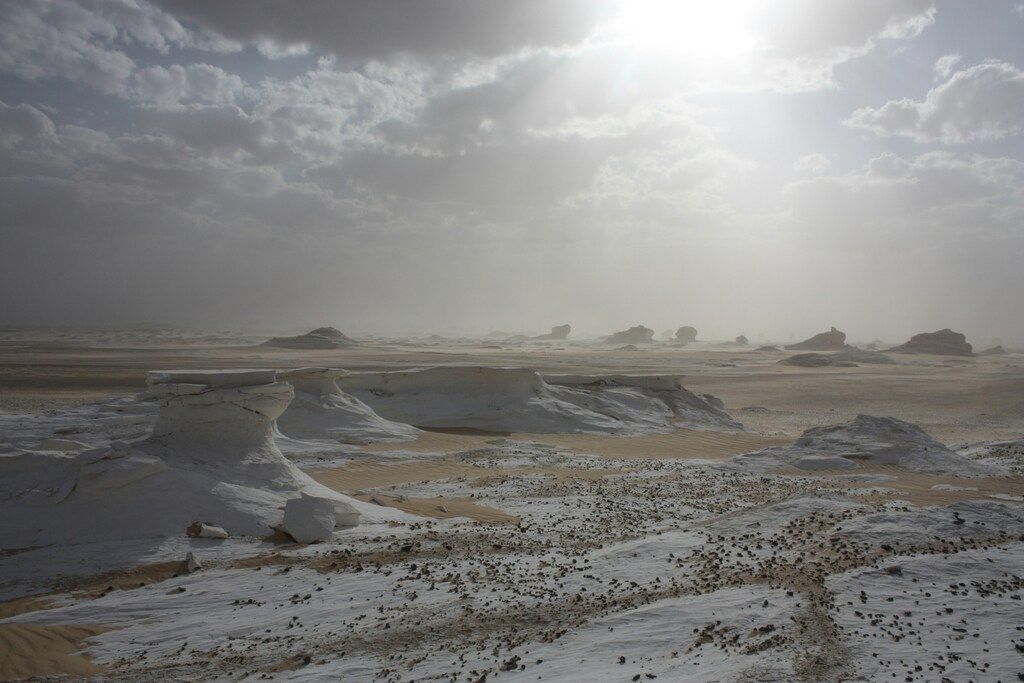
The Black Desert: a volcanic wonder in Egypt
A quick hop from the White Desert’s pale sprawl lies its moody twin: the Black Desert. This region flips the script, trading chalk for a rugged, shadowed vibe that’s just as captivating. Its name comes from volcanic hills blanketed in dark, iron-rich basalt stones and pebbles—creating a lunar look that feels miles apart from its white neighbor.
Those hills aren’t newbies. They’re leftovers from volcanic eruptions millions of years ago, weathered down and coated in black by time and erosion. Against the golden sands, they pop—especially under that fierce desert sun. Photographers can’t resist the drama.
El Marsous Mountain steals the show here. Shaped like a textbook volcano cone, it’s not a monster climb, but the summit delivers. Sweeping views stretch across the blackened hills, even teasing glimpses of the White Desert’s white glow in the distance. It’s a payoff that feels uniquely Egyptian.
What’s special is the transition. Tours often weave the Black and White Deserts together, letting you watch the land morph from dark, volcanic grit to surreal chalk in mere hours. It’s a crash course in geological diversity—proof Egypt’s deserts don’t mess around.
Less hyped than the White Desert, this spot still packs adventure. Off-road drives kick up dust through blackened dunes; hikes up volcanic mounds test your legs; and camping under the stars feels raw and remote. Access usually runs through Bahariya Oasis, about 370 kilometers from Cairo, often bundled into broader Western Desert jaunts with Crystal Mountain or nearby oases on the itinerary.
Hiking here means sturdy shoes and water—lots of it. The sun doesn’t play nice. But for those who brave it, the Black Desert serves up a stark, unforgettable slice of Egypt’s wild side.
The Great Sand Sea: Egypt’s endless dunes
Straddling the Egypt-Libya border, the Great Sand Sea rolls out as one of the planet’s grandest spectacles. This monster erg—fancy term for sand sea—spans roughly 72,000 square kilometers, ranking it among the largest unbroken sand deserts anywhere. Forget rocky patches; this is the classic desert dream—endless dunes stretching to every horizon.
These aren’t baby hills either. Some dunes tower past 100 meters—think 30 stories high. Shaped by wind, they’re always on the move, creeping across the landscape. You’ll spot crescent-shaped barchans and long, snaking longitudinal dunes that stretch for kilometers, each a testament to nature’s restless energy.
Adventure junkies, this is your playground. Dune bashing in 4x4s gets the adrenaline pumping; sandboarding down steep slopes is a rush; and multi-day treks plunge you deep into the sandy abyss. Want tradition? Camel caravans with Bedouin guides trace paths etched by centuries of travelers.
Isolation defines this place. The silence hits hard—nothing but the sand’s soft hiss. At night, with no lights for hundreds of kilometers, the stars feel close enough to grab. Stargazing here isn’t just pretty; it’s profound.
History buffs get a kick too. World War II saw the Long Range Desert Group dodge enemies through this maze. Earlier, explorer Ralph Bagnold cracked the code for driving these dunes in the ‘20s and ‘30s—tricks still in play today.
Reaching it means starting at Siwa Oasis up north or Dakhla Oasis southwards. It’s remote, tricky terrain—think experienced guides, beefy vehicles, maybe permits near the border. But for those who commit, the Great Sand Sea offers a pristine time capsule, barely touched in millennia.
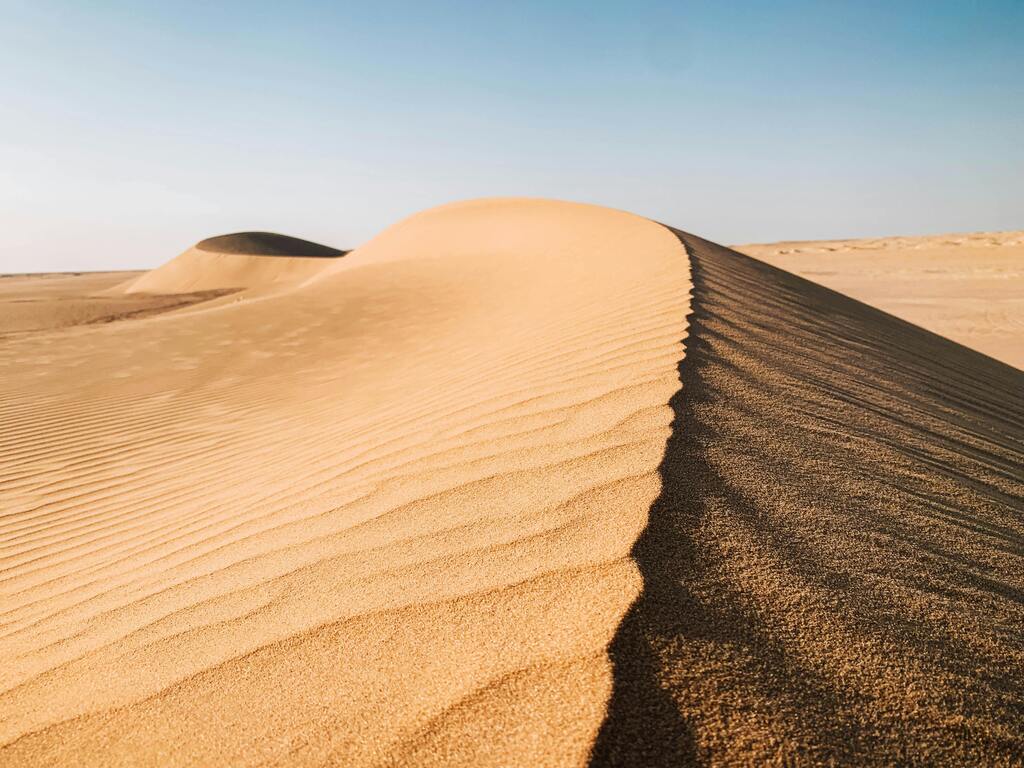
Siwa Oasis: a hidden gem in the Western Desert
Tucked near Egypt’s western edge, some 560 kilometers from Cairo, Siwa Oasis pops up like a desert mirage. Lush with date palms, olive groves, and clear springs bubbling from aquifers, this famous desert in Egypt spot blends raw beauty with a vibe all its own.
Siwa’s isolation has kept its Berber soul intact. Locals speak Siwi, rock unique customs, and build with “kershef”—mud, salt, and palm logs mashed into organic-looking structures. Shali, the ancient fortress town, looms like a melting castle against the sky—unforgettable.
Water’s the lifeblood here. Hundreds of springs dot the land, with Cleopatra’s Bath leading the pack—a deep, warm pool perfect for a soak. That water fuels killer dates and olives too, some of Egypt’s best organic goodies.
History runs deep. The Temple of the Oracle, from the 26th Dynasty around 700 BCE, drew Alexander the Great in 331 BCE for a divine nod. Its ruins perch on a limestone hill, begging exploration. Beyond that, adventure awaits—Bir Wahed’s hot and cold springs pair with dunes ripe for sandboarding, while the Great Sand Sea looms nearby. Most folks tear through in 4x4s, chasing sunsets that turn sand to gold.
Nighttime? Stargazing paradise. Tours often cap it with desert camping—stars blazing, Bedouin hospitality warming the chill. Siwa keeps its chill vibe despite more visitors, offering everything from simple guest houses to swanky ecolodges with spring-fed pools
A camel ride in Egypt desert hits different here—gliding between green oasis and vast sand feels timeless, rooted to the earth.
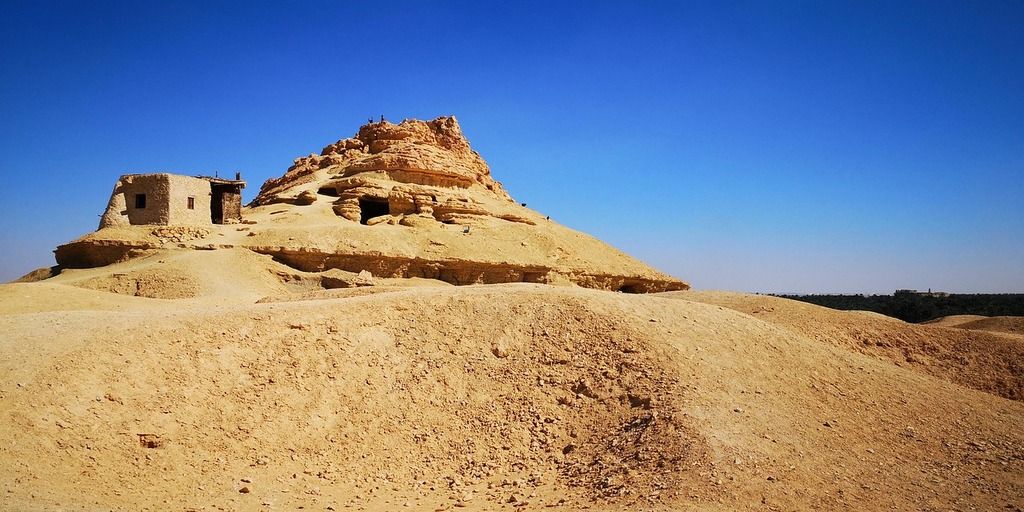
The Eastern Desert: rugged mountains and Red Sea views
While the Western Desert grabs headlines with oases and wild formations, the Eastern Desert—aka the Arabian Desert—carves its own path. Running from the Nile Valley to the Red Sea coast, this desert in north eastern Egypt covers about 221,000 square kilometers, trading sandy sweeps for rocky, mountain-studded turf.
The Red Sea Mountains anchor it, with peaks topping 2,000 meters—some of Earth’s oldest exposed rocks, forged from Precambrian stone. Ancient Egyptians mined here for gold, copper, emeralds, leaving scars like Mons Porphyrites (Roman purple stone) and Mons Claudianus (granite for columns). These sites, with temples and waterworks, peek into industrial pasts.
Wadi el Gemal National Park shines—7,450 square kilometers of mountains, desert, and coast. Acacia groves, mangroves, Nubian ibex, gazelles, and birds thrive, with Red Sea reefs just offshore. Spiritual vibes hit hard too—St. Anthony’s and St. Paul’s monasteries, from the 4th century CE, stand as Christian time capsules. St. Anthony’s, with its fortress walls and frescoes, hums with 16 centuries of unbroken faith.
Adventurers dig in—trekking caravan trails, climbing peaks, or jeep safaris through wadis that bloom post-rain. Multi-day trips often mix desert with Red Sea dips, a wild arid-to-ocean shift. The Sinai desert in Egypt, though a separate peninsula, echoes this rugged charm, adding Bedouin culture and Mount Sinai’s holy weight.
That said, outside of Egypt, the world has so much to offer in terms of deserts. Discover the most breathtaking deserts in the world, one dune at a time.

Explore Egypt’s Deserts on an unforgettable adventure
Egypt’s deserts rank among Earth’s wildest playgrounds—huge, varied, alive in ways that flip what you think a desert can be. From the White Desert’s chalky art to the Great Sand Sea’s dune giants, from ancient oases to craggy peaks, these regions reshape how travelers see barren lands and they’ve got something for everyone.
For adventure with soul, join an organized group tour and explore Egypt with guides who unlock these lands’ secrets, balancing safety and awe.
Sleep under White Desert stars, catch a Great Sand Sea sunrise, sip tea with Bedouin hosts—these moments linger long after the sand’s gone. Here, silence roars and time ticks in dune shifts, not clocks. Egypt’s deserts don’t just show you landscapes—they spark something bigger. So, pack up, ditch the ordinary, and let them call you home.
Egypt’s Deserts: Frequently Asked Questions
What are the main deserts to visit in Egypt?
Egypt features three primary desert regions, each offering a distinct experience:
- The Western Desert: The largest desert, famous for its vast sand seas, oases, and unique rock formations.
- The Eastern Desert: A rugged, mountainous region that stretches from the Nile to the Red Sea.
- The Sinai Desert: Known for its historical and religious significance, mountainous terrain, and coastal attractions.
What is the White Desert (Sahara el Beyda) famous for?
The White Desert is renowned for its surreal, snow-white landscape filled with massive chalk rock formations. Wind and sand have sculpted these rocks into incredible shapes, many resembling giant mushrooms or animals. It is a top destination for overnight camping under the stars.
What can I see in the Black Desert?
The Black Desert is characterized by its volcanic hills and plains covered in a layer of black, dolerite rocks. These dark stones stand in stark contrast to the golden sand, creating a unique and dramatic landscape.
What are the main attractions of the Siwa Oasis?
Siwa Oasis is a remote paradise in the Western Desert. Key attractions include:
- Swimming in the buoyant, crystal-clear salt lakes.
- Exploring the ancient mud-brick fortress of Shali.
- Visiting the Temple of the Oracle, once consulted by Alexander the Great.
What is the Great Sand Sea?
The Great Sand Sea is a massive expanse of sand dunes located in the Western Desert, stretching for hundreds of kilometers. It is a popular destination for sandboarding and thrilling 4×4 jeep safaris.
What is special about the Sinai Desert?
The Sinai Desert is a place of immense historical and spiritual importance. It is most famous for being the location of Mount Sinai, where Moses is said to have received the Ten Commandments. It also features the ancient St. Catherine’s Monastery at the foot of the mountain.
What are the top activities to do in the Sinai region?
The Sinai region offers a mix of adventure and history. Popular activities are:
- Climbing Mount Sinai (Gebel Musa) for a spectacular sunrise view.
- Visiting the historic St. Catherine’s Monastery.
- Diving and snorkeling in the world-famous Blue Hole near the coastal town of Dahab.
What is the best way to explore Egypt’s deserts?
The most common and effective way to explore the deserts, particularly the Western Desert with its oases and unique landscapes, is through guided 4×4 jeep tours. These tours often include camping, allowing for a fully immersive experience.


